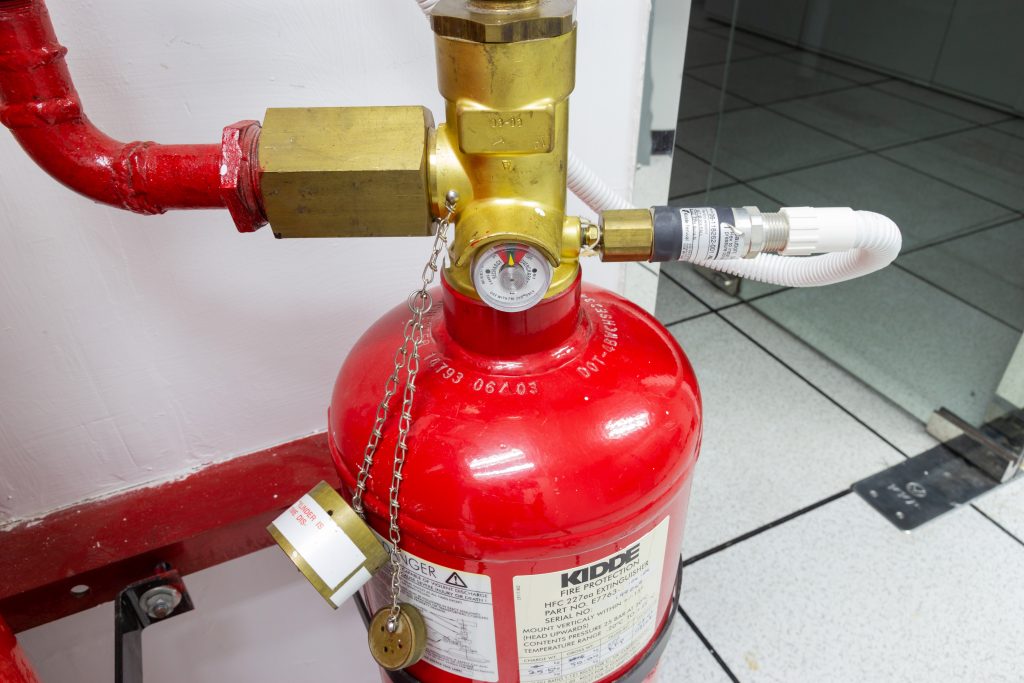For over 40 years, Butterworth Laboratories has provided independent, contract analytical services to the global pharmaceutical and related industries.
Recycled fire suppressant specifications – is there a case for revision?
7 March 2024
Having arrived in the chromatography laboratory at Butterworth’s in September 1994, the first work I was assigned was the determination of the purity of fire suppressant gases. The analysis was to be performed using a Carlo Erba HRGC 5300 GC equipped with a gas sampling valve. Over the next 15 years, I would develop a close personal friendship with the ‘Italian Stallion’, as my mentor Denis called it, built on a mixture of admiration and fear. Admiration for the chromatographic reproducibility and sensitivity delivered by this legend and the fear that it may fall on my toes one day. It remains the heaviest GC I have ever known, with incredible steel, brass and aluminium build quality. Anyway, I digress.
At this time, the samples were mostly Halons 1211 and 1301 for purity confirmation after reclamation and recycling imposed under the provisions of the Montreal Protocol. Testing was conducted to comply with the minimum requirements for purity of 99.0 and 99.6% mol/mol. Due to contamination of the materials during the reclamation process, the major impurity in Halon 1211 was Halon 1301 and vice versa. Over the last 30 years, increasing levels of such cross-contamination have been seen due to repeated recycling. The pattern of contamination of one fire suppressant with another continues today for more up-to-date materials. In the case of Novec 1230, the major contaminants are now FM 200 and FE 36. The only flammable contaminant of personal note in samples is low, and I believe insignificant, levels of methanol seen in Halon 1301. I have been told this was due to intended low-level doping with methanol for aviation applications to reduce the possibility of blocking gas nozzles with ice otherwise caused by the interaction of atmospheric humidity with valve components supercooled by the expansion of compressed gas exiting pressurised containers.
Well, that’s the background we have at Butterworth with regard to Halon analysis. My main point here is a question not to do with analysis but regarding the limits for impurities in fire suppressants prescribed by ISO, ASTM and other standards, where the specifications set were intended to be applied to new production materials. While not complying with the specifications, my question is, is there any real safety impact of Halon 1301 being contaminated with 1% of Halon 1211 being used as a fire suppressant? Isn’t there an argument that a minimum 98.0% mol/mol specification would be fit for purpose when applied to recycled gas? The consequence of the ever-increasing number of samples failing current purity specifications is not trivial. While any non-condensable gas, oil and particulate contamination can be easily removed by standard equipment used by companies involved in recycling, very few have the gas distillation rigs required to resolve the problem of cross-contamination. This results in the economic cost associated with distillation and increases the risk of unintentionally releasing highly potent ozone-depleting and global warming substances. The environmental impact of the increased transportation required to and from distillation facilities is also significant, as are the safety implications posed by the haulage of high-pressure gas containers. I am not a fire suppression specialist, but is there a place for new specifications for recycled materials, or am I missing some point? I would be interested in hearing an expert’s view on the functional relevance of low levels of cross-contamination.